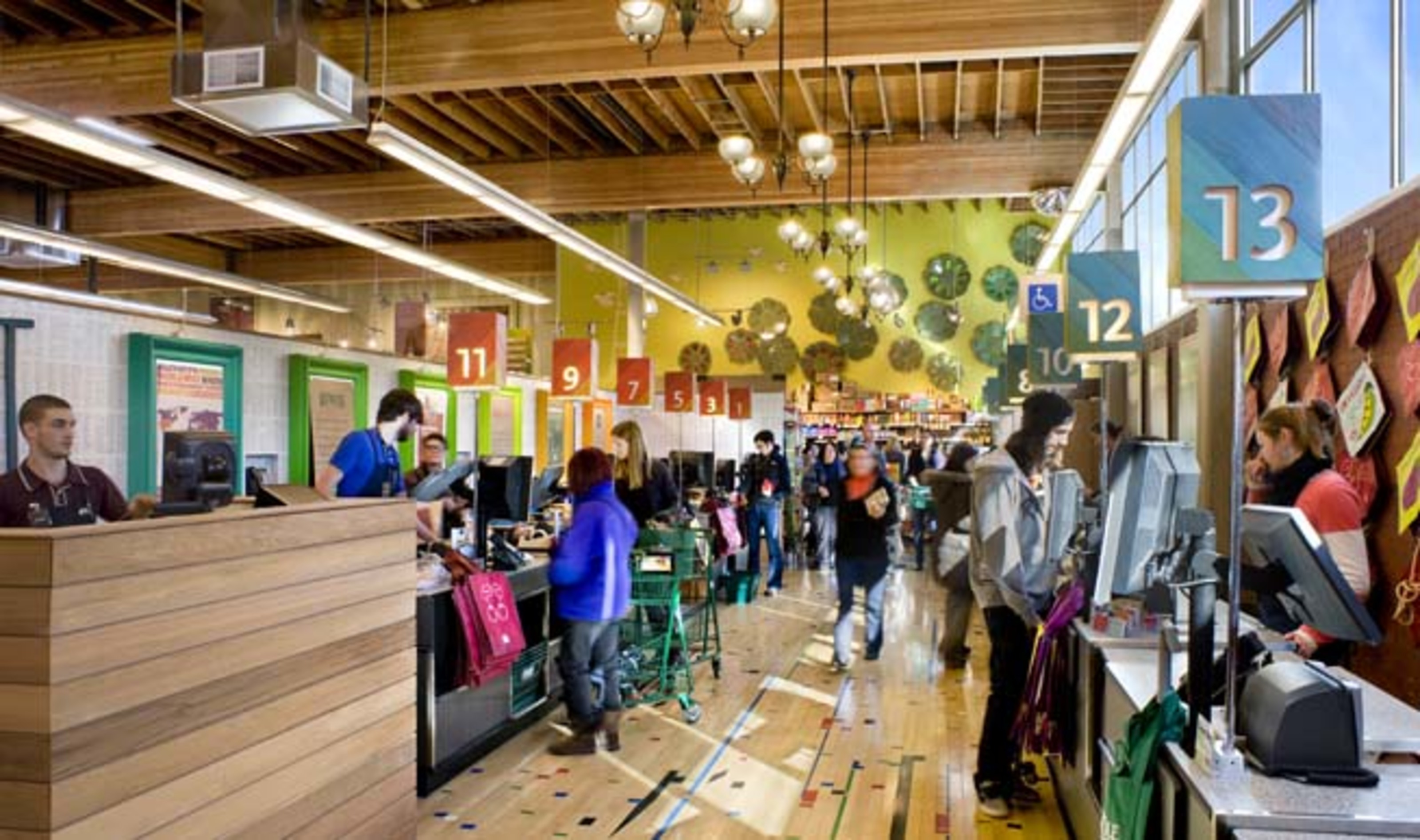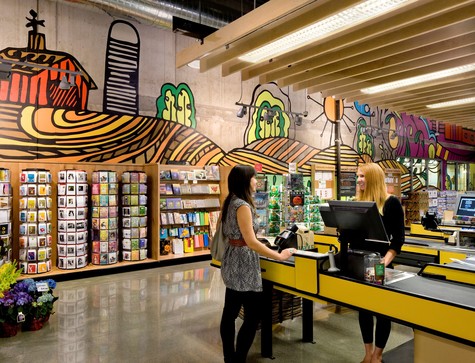
Grocery Stores as Urban Anchors
Urban grocery stores are becoming more popular as anchors, not only for mixed-use centers but also for entire communities. Many of the biggest stores have a sizable footprint, perhaps 55,000 square feet, usually with structured parking; these grocers generally keep the design of each store and the merchandise the same, regardless of whether the store is in Los Angeles or Denver.
Others tailor their offerings and services to a specific community. Mi Pueblo, which has about 20 stores in the Bay Area, the Central Valley, and the Monterey area, offers foods from Central America and Mexico as well as check cashing, a travel agency, and options for sending money to family members outside of the US. 99 Ranch Market, which has about three dozen stores, primarily in California, focuses on serving Asian communities. Some of the stores have banks, delis, and bakeries, and they often serve as anchors, attracting restaurants, traditional Chinese medicine shops, or gift shops.
Whole Foods Market tends to customize its store design to fit each location. Part of that has to do with the regional nature of the company’s leadership, and part of that has to do with the company’s strategy of reusing existing buildings to get a location with the right demographics. In other words, it will customize the store to the site, rather than customize the site to the store, and make sacrifices in the physical plan if necessary to serve its customers. The design process involves surveying local needs to incorporate special offerings, whether it’s an in-store brew pub, wine bar, or health club. For example, a wellness center might offer classes and menus, local hikes, and store discounts. Or, on a Tuesday night, a brew pub might invite local brewers to bring their beers and take over. It creates a local connection.
That may be increasingly important as retail juggernaut Amazon dives into the grocery business. In 2007, six years after the online grocer Webvan went bankrupt, Amazon founded AmazonFresh, which works with local vendors and delivers groceries directly to consumers by van. Consumers order the items they want online and choose when they’d like them delivered the next day, with an option for pre-dawn delivery. While other online grocery providers exist, of course, like Peapod, and Safeway offers a similar service in a number of states, Amazon has a long track record of shaking up the retail landscape. However, after five years of operating, AmazonFresh has yet to expand beyond Seattle.
Whole Foods Market is incorporating technological interfaces in a different way: at the store in Washington D.C.’s Foggy Bottom neighborhood, which opened last August, an array of touch-screen kiosks allows customers to customize, order, and pay for lunch items made in store’s kitchen. Customers can even save their choices so they can get the same thing again next time if they choose.
Five years ago, developers found it difficult to imagine a grocery store as the anchor of a retail center. Now, they are hot items. Whether online retailing will do to the grocery business what it did to hard goods remains to be seen. In the meantime, the contest in urban locations is between the economy-of-scale one-size-fits-all stores and the more targeted models that companies like Whole Foods Market, Mi Pueblo, and 99 Ranch Markets are pursuing.
Many years ago, when Field Paoli was working on a downtown revitalization scheme in Northern California, we were told that a grocery store was not an appropriate anchor for a downtown district. Since that time, the vision of our downtowns has evolved to be more inclusive and varied. The grocery store delivers economic vitality and serves a broad spectrum of customers to drive foot traffic and fulfill an important civic need.


